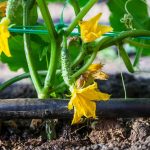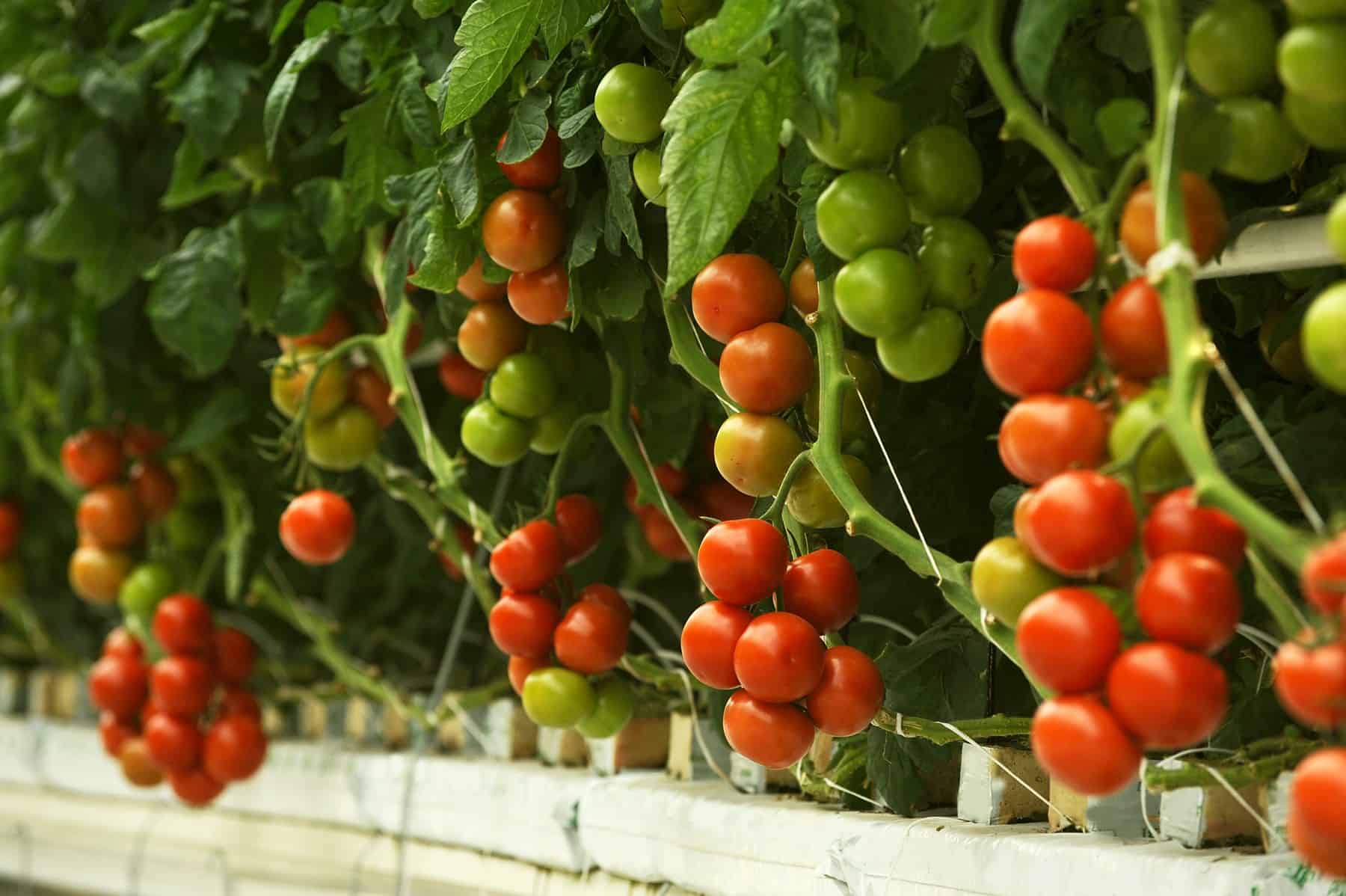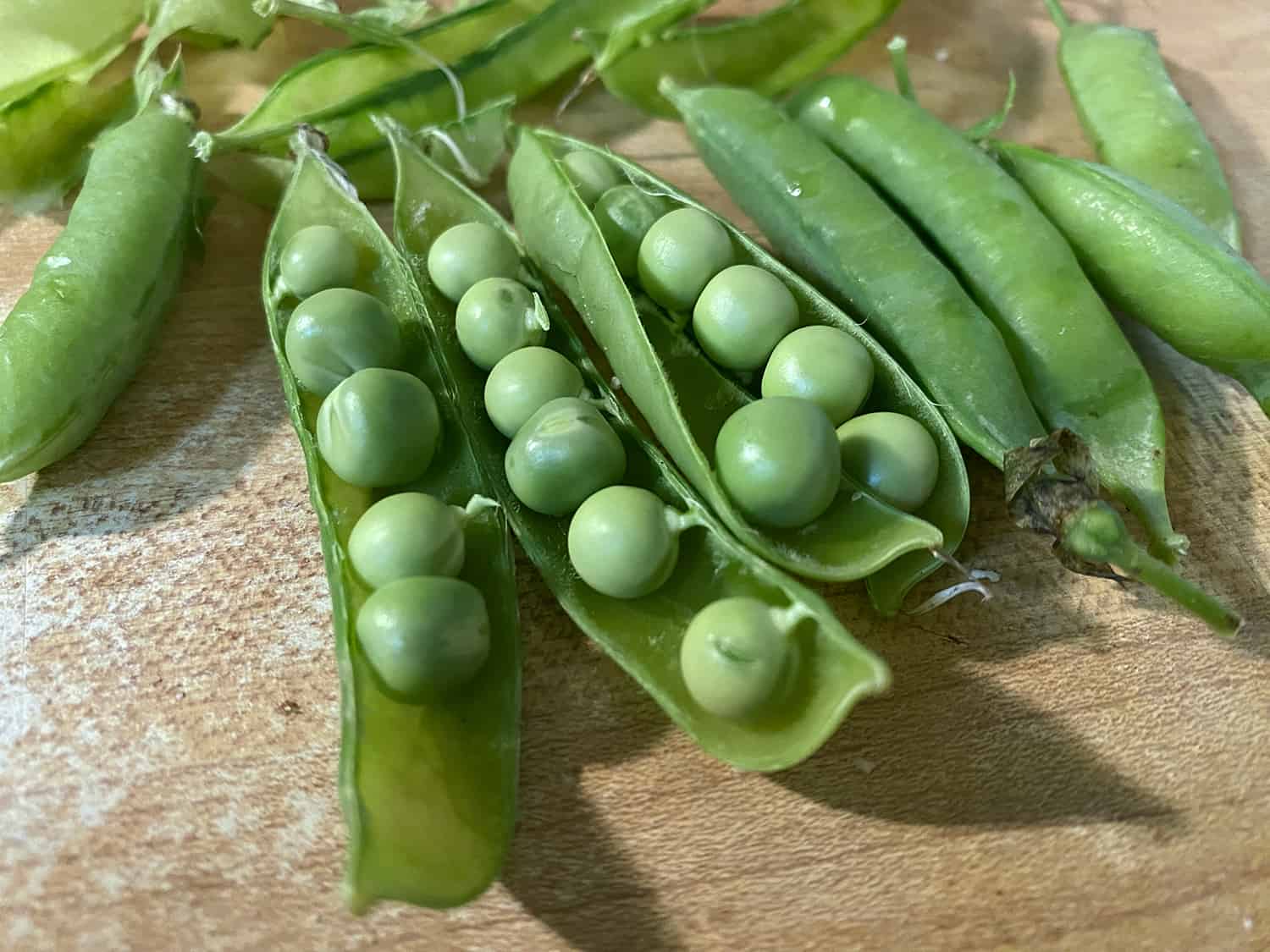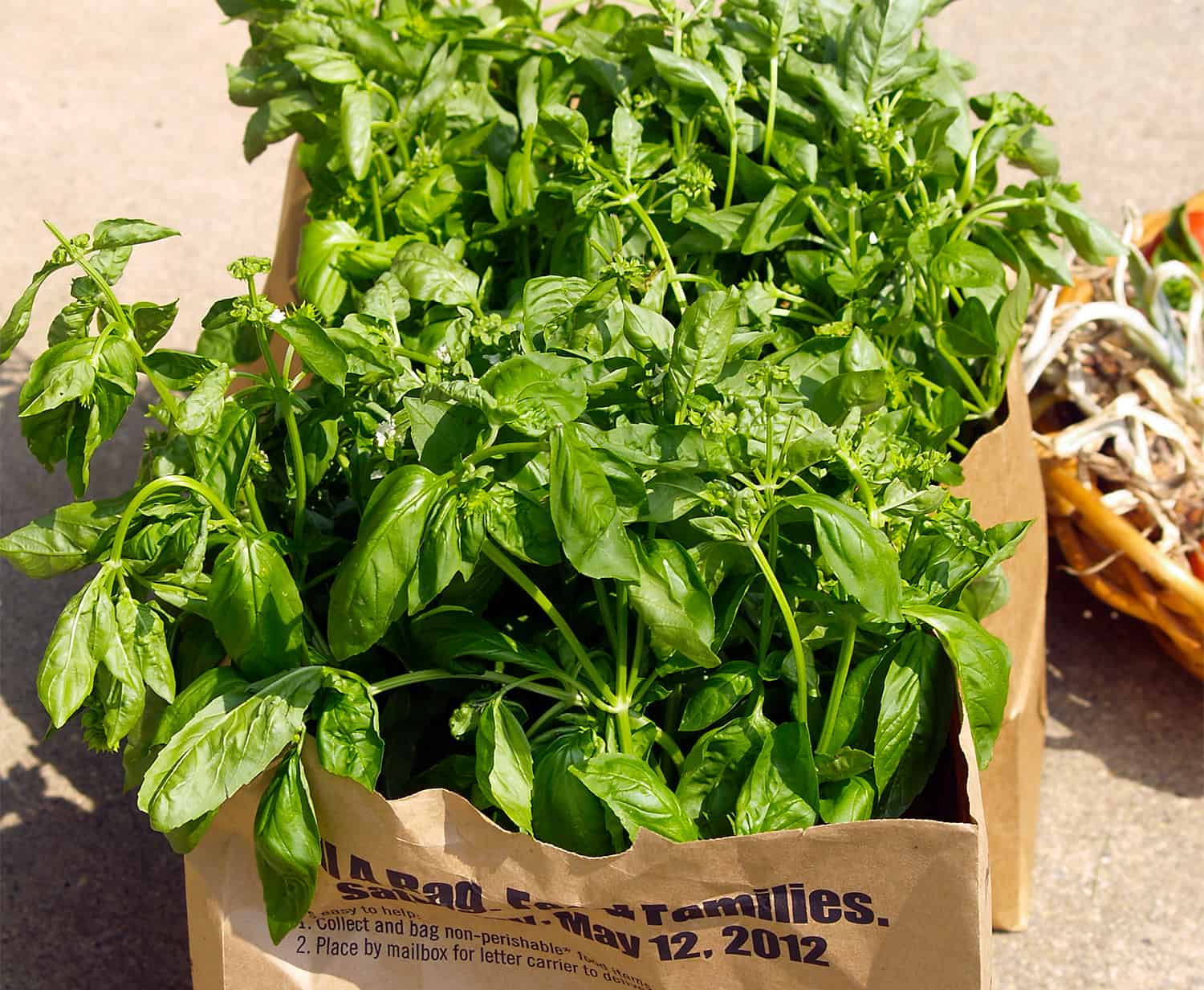[ad_1]
Hydroponic gardening, or “Hydroponics”, refers back to the observe of rising crops with out soil, using solely mineral nutrient options, water, and/or a soilless rising medium. In hydroponic techniques, crops are grown with their roots submerged instantly in a nutrient answer or by utilizing perlite, gravel, rockwool, coir (coconut fiber), clay combination, or different mediums for soilless cultivation.
This type of rising meals has revolutionized farming in addition to the meals business. It’s an modern and environment friendly method of rising crops, particularly in city environments the place house is proscribed. Whereas it’s true that organising an indoor hydroponic develop system requires particular gear, one can simply assemble a low-cost and easy system with out a lot bother when you perceive the fundamentals of hydroponics.
On this article, we dive into how hydroponic gardening works and how one can begin rising hydroponic crops.
What’s Hydroponics?
Hydroponics is a way to develop crops with out soil, utilizing water-based nutrient sources. In a hydroponic setup, crops are grown in a managed house, resembling a greenhouse or any well-lit indoor or outside house, and are fed with a nutrient answer that accommodates the entire important minerals and vitamins wanted for wholesome development. Hydroponics can be utilized to develop all kinds of crops, together with greens, herbs, and decorative crops, and is commonly utilized in city farming and industrial agriculture. Vegetation obtain optimum vitamins, water, and daylight to assist development and maximize yield in a well-maintained hydroponic system.
Causes To Select Hydroponic Gardening
There are various causes to develop your crops hydroponically; restricted house, most yield, and quicker development being the commonest.
- Sooner development: In hydroponic techniques, crops have speedy entry to all of the vitamins they want, together with oxygen, by way of a exactly managed nutrient answer. This enables the crops to develop quicker and produce bigger yields than soil-grown crops, which can not have entry to as many vitamins in excellent stability, particularly in compacted, polluted, or depleted soils.
- Greater Yield: Hydroponic techniques have proven greater yield in comparison with soil-based farming. The picture beneath exhibits the yield comparability for various crops per acre.
- No Soil Wanted: One other advantage of hydroponic gardening is the absence of soil. Should you stay the place the soil isn’t fertile, is polluted, or have restricted outside house in an city space, organising an indoor hydroponic backyard can tremendously profit you.
- Say No To Weeds: For a lot of gardeners, weeding generally is a tedious, prolonged, and time-consuming process. With hydroponic gardening, there are not any weeds (or not less than, only a few).
- Fewer Illnesses: Hydroponic techniques get rid of the necessity for soil, which is a standard host for pests and ailments.
- Area Saving: By rising your crops hydroponically, you’ll be able to develop extra in a smaller space. That is significantly helpful for residents in city areas with little or no outside house who need to develop greens, herbs and different crops.
- Saving Water: In hydroponic techniques, water is circulated and reused as a substitute of being misplaced to evaporation. This could tremendously cut back water utilization in comparison with conventional gardening strategies.
All You Want To Set Up Your First Hydroponic Backyard
Select an appropriate location on your hydroponic backyard
Your hydroponic backyard will be arrange wherever in your house and even open air. The situation must be well-lit, ventilated, and away from excessive temperatures.
Select a hydroponic system
With easy and easy-to-afford setups, listed below are 4 hydroponics techniques which are appropriate for rookies: wick system, water tradition, ebb and move, and NFT.
Wick System
The Wick system is the only of all hydroponic techniques since there are not any shifting elements or electrical parts. Nevertheless, this technique is probably not appropriate for water-intensive crops resembling tomatoes or lettuce, which can eat the nutrient answer quicker than the wicks can replenish it. The wick system is finest suited to rising herbs, peppers, and microgreens.
The crops are positioned in a wicking medium like perlite or vermiculite. The container is positioned instantly above the water and nutrient reservoir, and a wicking rope or felt strips hyperlink the medium to the answer. Because the wicking medium turns into dry, the wicking rope or felt strips naturally draw extra water and nutrient answer from the reservoir.
Appropriate crops to develop: Finest suited to non-fruiting crops resembling lettuce, herbs, and many others.
Water Tradition (Lettuce Raft) System
Water Tradition, often known as the lettuce raft system, is one other simple hydroponic setup that takes solely a short while to arrange. On this hydroponic system, crops are positioned on a Styrofoam platform that floats atop nutrient-rich water. Roots are submerged within the nutrient answer for fixed feeding.
Water Tradition is an easy and cheap hydroponic system, and is commonly used to develop leafy greens like lettuce, spinach, and herbs. The system requires minimal upkeep and will be simply scaled up or down relying on the variety of crops being grown.
One of many advantages of Water Tradition/Lettuce Raft is that it offers a excessive degree of oxygenation to the roots, which might promote quicker development and more healthy crops.
Appropriate crops to develop: leafy greens and herbs resembling parsley, chives, dill, and basil develop nicely within the water tradition system. Different light-weight crops embody sizzling peppers, cabbage, and bok choy.
Ebb & Stream System
The Ebb & Stream system is often known as a flood and drain system. On this setup the crops are grown in a tray or container crammed with a rising medium, resembling gravel or clay pellets. The container is crammed with nutrient-rich water periodically after which drained, making a cycle of ebb and move.
This hydroponic system is often arrange with a water reservoir beneath the rising tray. A submersible pump is used to pump water from the reservoir into the container, filling it to a degree. Because the water degree rises within the setup, it soaks the roots, and the surplus water drains away by way of an overflow tube.
The primary benefit of Ebb and Stream techniques is that the setup offers crops with entry to each water and air, selling wholesome root development and quicker plant development total. Nevertheless, it’s essential to observe the nutrient ranges of the water often to make sure that crops are getting the correct diet they should thrive. This technique is barely advanced to arrange, however it is vitally versatile.
Appropriate crops to develop: Strawberries, Cucumbers, Tomatoes, Peppers, Spinach, Beans, Herbs, chilies, and many others.
NFT (Nutrient Movie Method)
One other well-liked and easy hydroponic system for house gardening is the Nutrient Movie Method. It features a steady move of nutrient answer that circulates from a reservoir by way of a rising tray, the place roots are suspended down and soak up vitamins as the answer flows previous them.
In contrast to the Ebb and Stream system, this hydroponic technique doesn’t depend on periodic cycles and offers a relentless move of vitamins. The crops are grown in a protracted, slender channel or trough, with their roots bathed within the flowing nutrient answer.
Appropriate crops to develop: The nutrient movie approach is handiest for fast-growing, shallow-rooted crops like lettuce, spinach, radishes, and herbs.
Choose your hydroponic crops
For these new to hydroponic gardening, beginning with a stay plant moderately than rising from seeds is commonly really helpful. It’s advisable to search for seed corporations that supply varieties particularly really helpful for hydroponic rising. Nevertheless, in case you select to start with a seedling, it’s essential to completely rinse the soil from the plant’s roots to keep away from contamination of your water and nutrient answer.
Some issues when selecting crops for hydroponic techniques:
Progress behavior: Vegetation with compact development behavior are likely to work nicely in hydroponic techniques. Examples embody leafy greens like lettuce, spinach, and kale, and herbs like basil and mint.
Nutrient necessities: Select crops that may thrive with the precise nutrient answer. For instance, lettuce and herbs have comparatively low nutrient necessities and might do nicely with a primary nutrient answer, whereas fruiting crops like tomatoes and cucumbers could require a extra advanced nutrient answer.
Choose your lighting
Rising hydroponic crops open air through the summer season is the simplest choice. That is significantly handy for many who have entry to a sunny aspect patio or open house. Indoor hydroponic techniques, alternatively, require develop lights. Though chances are you’ll obtain passable outcomes rising crops indoors with ample daylight from a south-facing window throughout winter, synthetic lighting is usually obligatory. For small-scale hydroponic techniques, essentially the most generally used lighting choices are fluorescent bulbs and LED.
Select your hydroponic rising medium
Whether or not a rising medium is important depends upon the kind of hydroponic system you go for.
Kinds of hydroponic rising mediums embody:
- Coir
- Perlite
- Vermiculite
- Rockwool
- Clay combination
- Rice hulls
- Growstones
- Peat moss
- Sand
- Gravel
- Hydroponic sponges
Select a hydroponic nutrient answer
Deciding on an appropriate nutrient answer is one other essential step in organising your hydroponic backyard. Selecting a high-quality answer acceptable for the actual crops you plan to develop is crucial.
Whereas skilled hydroponic gardeners can create customized nutrient options, rookies can buy a pre-made model resembling Normal Hydroponics or Superior Vitamins.
Arrange a assist construction
Establishing a correct assist construction is essential for the success of a hydroponic system. The kind of assist you want will depend upon the hydroponic setup that you just’re utilizing. For instance, in case you’re utilizing a vertical hydroponic system, you’ll want a assist construction that may accommodate the burden of the crops and the water.
For rookies, a variety of hydroponic kits obtainable available in the market can come pre-assembled or with all the required parts that will help you begin your hydroponic backyard.
Different issues on your hydroponic backyard
There are some things that your hydroponic system would want upkeep for, together with water, bugs, and illness.
Managing water
Though some hydroponics assets recommend a “set it and overlook it” technique the place the water isn’t modified, this method is simply acceptable for short-term crops like lettuce, which will be harvested inside 6 to 7 weeks.
Within the case of long-term crops resembling tomatoes or constantly harvested herbs, altering the water in your hydroponic system is essential for selling plant well being and making certain meals security.
Insect administration
Though hydroponic techniques expertise fewer insect issues than soil-based gardening, there may be nonetheless a chance of encountering bugs throughout hydroponic rising. The presence of bugs will range based mostly on whether or not you’re rising indoors or open air.
Sanitation is the first strategy to handle bugs in hydroponics. To stop bugs from infesting your hydroponic system, keep away from bringing crops indoors from outdoors. Earlier than bringing house crops bought from a backyard retailer or nursery, test carefully for bugs.
At all times start with clear gear and containers, and sanitize them between plantings. If insect strain turns into substantial, take into account harvesting all crops and beginning over to interrupt the bugs’ life cycle. Sustaining distance between your hydroponic setup and different houseplants may also assist decrease insect issues.
Illness administration
Though hydroponic techniques supply safety in opposition to varied soil-borne pathogens, the chance of illness remains to be current. To handle ailments in your hydroponic system, it is very important undertake preventive practices. Use seeds solely from wholesome crops which have undergone hot-water therapy or a Hydrogen Peroxide soak earlier than planting. Maintain all supplies, resembling containers and instruments, clear and sanitized between makes use of.
Keep a heat temperature of over 65°F within the rising space, particularly throughout germination, and permit for correct air flow. Observe spacing instructions on seed packets, and take into account including a fan to enhance air flow. Commonly test the well being of your crops and take away any diseased crops promptly.
pH Steadiness
Sustaining the appropriate pH degree is essential for the well being of your crops. It’s essential to remain throughout the particular pH vary your plant requires, though most crops thrive in a pH of 6.0 to 7.0. To maintain monitor of your pH ranges, use a pH testing equipment and modify the degrees by including pH-Up or pH-Right down to your water reservoir as wanted.
Harvest your crops
Lastly, as soon as your crops have reached maturity, it’s time to reap them. Merely lower off the leaves or fruits as wanted and luxuriate in your recent, homegrown produce.
Herbs and leaf lettuce will be harvested a number of occasions by reducing the mature leaves or stems from the decrease a part of the plant as wanted. The plant can proceed to develop after every harvest. Ultimately, the expansion charge of the plant will decelerate.
Sometimes, hydroponic growers harvest 3-5 occasions from the identical crops earlier than beginning with new seeds or crops. Nevertheless, some varieties resembling head lettuce are meant to be harvested solely as soon as and won’t regrow after reducing.
With somewhat endurance and a spotlight to element, you’ll be able to create a thriving hydroponic backyard that can offer you recent, wholesome produce all 12 months spherical.
Writer bio: Nicole McCray, as a second era farmer, takes nice curiosity in studying and implementing sustainable and progressive farming strategies on her apple farm. She additionally likes to share her information by way of writing on occasion.
[ad_2]










